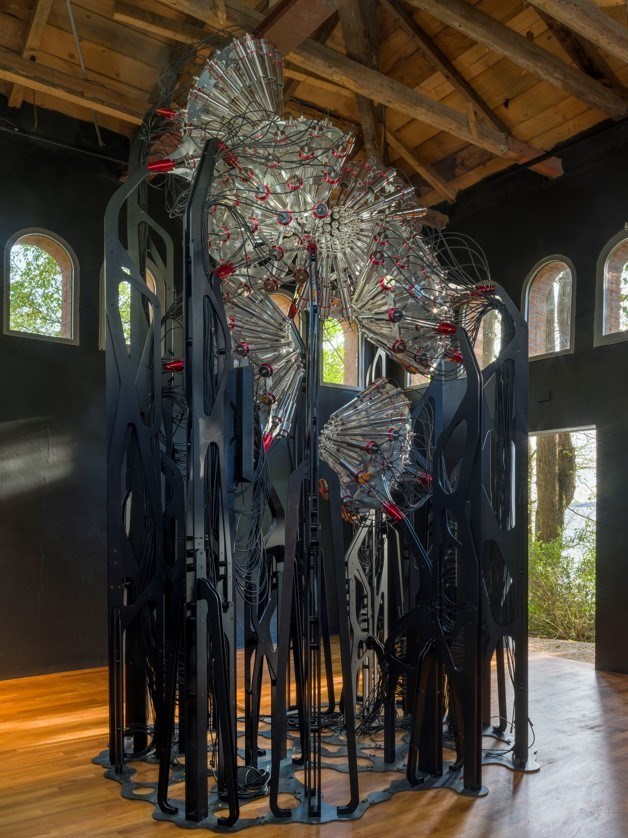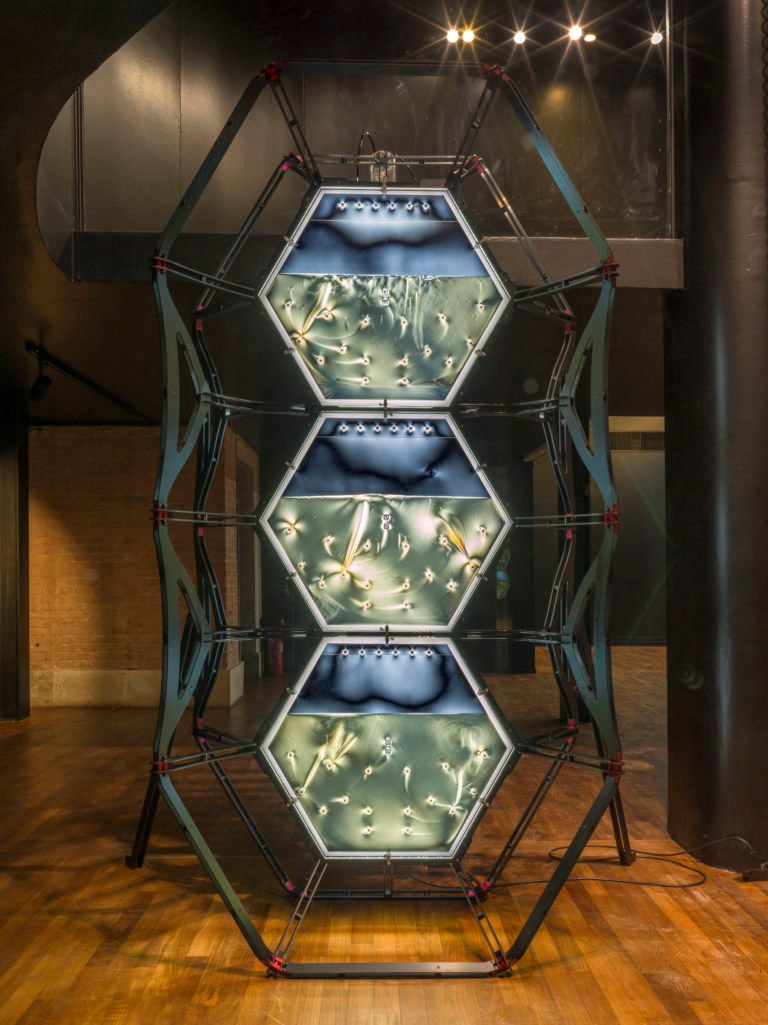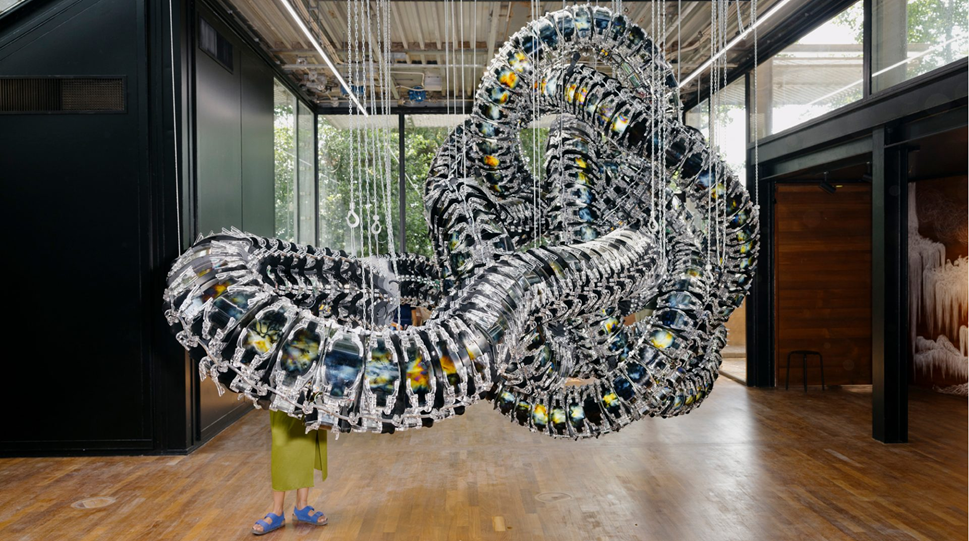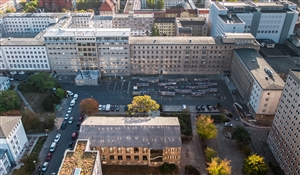South Korean Pavilion at Venice Biennale; a Gyre in The Infinite Cycle of Creation and Destruction
20 Aug 2022The 59th edition of the Venice Biennale is currently being held in Italy. Attracting numerous viewers to pavilions of different countries in Venice, the event is concentrated on presenting surrealistic works this year. Arsenal and Giardini are the two main exhibition areas, while some pavilions are located throughout the city. The South Korean pavilion, situated in the Giardini area, presents artworks by Yunchul Kim, one of the country's contemporary artists. This show keeps running in a creation-destruction endless cycle which passes through everything, including energy, matter, life, and the world. The exhibition, with the general title of "Gyre", explores the surrounding world as a maze; it is a situation in which movement happens amid stillness, and stillness happens amid movement, all involving non-human objects and the raw material of reality.

"Argos" - The Swollen Suns” at Korean Pavilion | Part of the ceiling structure was removed for the installation, according to curator Lee Young-chul. (Arts Council Korea) | Source: www.koreaherald.com
Yunchul Kim has conducted interdisciplinary surveys of literature, mythology, philosophy, and basic research to create the visual appearance of the South Korean pavilion at the Venice Biennale 2022. The overall appearance of these installations is constantly affected by elements such as cosmic events, atmosphere, light, and nature. Also active in composing electronic music, the artist has filled the pavilion's space with five kinetic installations and a space-oriented mural. According to Lee Yunchul, curator at the South Korean pavilion, choosing "Gyre" as the show's title was inspired by one of William Butler Yeats' poems.
By arranging living bodies in the exhibition space, Kim has done his best to match the pavilion's installation with his mental image. The bodies are meant to associate in the viewer's mind with a sense of going back and forth between the beginning and the end of a cycle. This art, based on a combination of literature, myth, philosophy, and science, is presented in three themes: "The Swollen Suns", "The Path of Gods", and "The Great Outdoors".
A 50-meter-long structure called "Chroma V" is placed in the center of the main hall. It is a gigantic, snake-like installation wound around its center, acting like a central nervous system that links other installations in the pavilion together. Chroma V, which is very similar to an enormous, shiny dragon, is placed right in front of a wall on which a design by Kim, titled "Gyre", with delicate silver and white patterns on a brown, wooden background, is installed.
In the corner of the pavilion, there is another installation titled "The Swollen Suns", mostly made of black metal structures on top of which thousands of twisted glass tubes are installed while momentarily emitting light using fundamental particles of an atom. Signals transmitted by the components of this installation stimulate Chroma V and make it move. The gigantic, shiny structure conveys the consequences of the sun's explosion, the accumulations it causes, and how the apparently destroyed particles can form a new world. Any new world subsequent to destruction or explosion seems to be shaped based on a light source; the light source declines because of certain cosmic events, and with the particles scattered due to its explosion, a new world is formed.

Yunchul Kim | La Poussière de Soleils | Korean Pavilion, 2022 | Courtesy of the artist | Image by Roman März | Source: www.kiaf.org
Another installation consisting of a network of three units arranged together like the hexagons of a honeycomb presents a lively and dynamic nature because of the interactions happening in the green liquid inside each unit. Particles in each unit collide and, in relation to their respective densities, cause a short movement within the range of their own wavelength.
"Impulse" is the name of another installation presented in the South Korean pavilion. At first glance, it may seem like a magnificent chandelier attached to the pavilion's ceiling with its thin wires hanging all the way down to the room's floor. In a closer look, however, the thin wires happen to be thin tubes through which a certain amount of water flows between glass, cylinder-shaped bottles; the liquid is said to be acquired from Venice's surface waters.
More than any other installation in the pavilion, the final structure, called "Flare", has a visual nature and a scientific background. It consists of two huge glass containers, each filled with a liquid. The liquid inside the lower container flows due to the movement of some rods, making it appear like a shiny flame that constantly rotates.
In an overall look, the South Korean pavilion, with its structures and installations, seems like a scientific laboratory. As much as we encounter such a space from the outside, Kim invites us with his installations to look inside. This inside can be as tiny and invisible as an atom, or it can be so big that it surpasses our seeing ability. The silver, robotic appearance of the gigantic structures that Kim has placed in the South Korean pavilion ends up in a cycle of life and death, a life that leads to death and a death that owes its new life to its former disintegrated particles. Although the audience may consider each of these installations beautiful and eye-catching in a popular way, the artist has not looked for a pure presentation of art in the process of creating these installations; what goes on in the heart of the enormous dragon and its related structures is the revival of science that uses other fields like literature, myth, and philosophy to present itself.
Sources:
- www.labiennale.org/en/art/2022/korea-republic
- www.koreaherald.com/view.php?ud=20220421000892
- /www.designboom.com/art/yunchul-kim-gyre-exhibition-korean-pavilion-venice-04-22-2022
- www.artreview.com/lee-young-chul-to-curate-south-korea-pavilion-at-2022-venice-biennale
Slider and cover image:
- www.fivemedia.com






